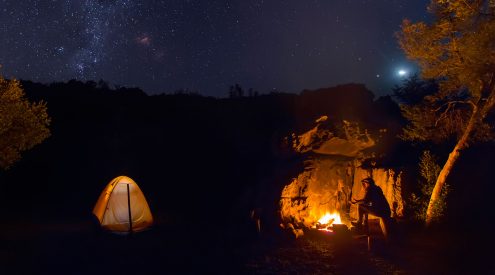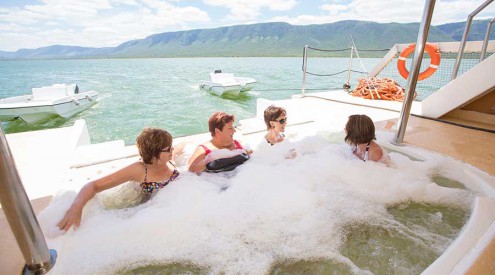Experienced trackers accompany rangers on game drives and spend the duration of the drive perched in the flimsy, exposed seat at the helm of 4×4 game vehicles. This seat is known as the “tracker’s seat” and it is not a place for the inexperienced or the faint-hearted. Trackers are the eyes and the ears of the game drive and are exposed to close encounters with predators. The tracker seat on a game vehicle – is it safe or are we putting our guides/trackers in unnecessarily risky situations? Public opinion remains divided on the subject and each reserve presents different rules and regulations with regards to guiding.
In the Kruger National Park, for example, wildlife is used to the presence of vehicles and therefore the majority of lodge’s guides use a tracker. Before waxing lyrical about this tracker-seat-dilemma and whether it constitutes responsible guiding, I decided to consult the experts.
Rangers Matthew Brennan (Africa on Foot) and Jason Kipling (Umkumbe Safari Lodge) took time out from their day to answer my probing questions. I sent them the below image, which has been a topic of discussion and asked their opinions about the infamous tracker’s seat.
Too close for comfort?
Image from Indlovu River Lodge by Mems Carim
Do you think the situation depicted in the above image is cause for concern?
Jason: It all depends on the situation. If the driver/guide drove straight into that position, then yes. It is not a cause for concern if the lion was merely walking past. The lion seems to have a full stomach and therefore will only attack if he feels threatened. Alternatively, if the lion has previous experience of being fed by humans things could turn nasty; but this is unlikely the case.
Matt: No. The lion was curious rather than aggressive. The behaviour suggests that the sighting is within safe parameters and is responsible guiding.
What has been your most harrowing in-the-tracker-seat experience?
Jason: I once had a female leopard sniff my foot!
Matt: The low hanging branches that we don’t see! The tracker seat is no more safe or unsafe than the rest of the vehicle.
How close is too close?
Jason: The tracker can be the most experienced in the world and he can still be too close. Before allowing any animal to get “close” it is important to assess the behaviour and mood of the animal. Guides and trackers are aware of the different zones. These zones include the comfort zone, alert zone and attack zone. It is always advisable to stay inside the comfort zone.
Matt: It is all about reading animal behaviour and allowing them to feel like we aren’t imposing on their space. Sometimes they’ll let us come within close parameters, other times we remain a fair distance away.
Tracker from Africa On Foot discovers a lion pride.
The game vehicle from Umkumbe Safari Lodge with tracker approaching a leopard.
Is sitting on the tracker seat on a game vehicle too risky?
Jason: If both tracker and guide are responsible it’s not risky at all. It’s an extremely useful seat, accommodating an extra pair of eyes to look out for game. In private reserves tracking plays an important role in finding animals and helping us to know where to look!
Matt: The tracker seat is a useful place from which to look for tracks and survey the bush for animals. If the tracker is in trouble then so are the rest of the occupants in the vehicle. The tracker seat is as safe as anywhere else on the vehicle and it is very useful for guides.
My opinion? The tracker seat on a game vehicle is only a dangerous place to be if the guide is irresponsible. In the wild you’re constantly at risk, whether in the tracker’s seat or cocooned inside the vehicle. If the guide and tracker are responsible guides and guests comply with the rules detailed from the outset of a game drive, there should be no cause for concern. Animals react to movement. It is common knowledge that guests’ should never stand up in the vehicle, unless given the go ahead. Animals see the vehicles as one entity and do not single out the body in the tracker’s seat. In areas where wildlife is blase about vehicle presence, close encounters are less risky. However, in areas more remote, I would excercise caution and remain well within the comfort zone parameters. Animals, much like humans, are unpredictable under duress.
I wouldn’t stress about the lioness casually strolling past the vehicle. I’d worry more about the Mozambique Spitting Cobra that’s slithered its way into your camera bag.
Do you think that the tracker’s seat on a game vehicle a dangerous place to be?
An elephant observes a tracker in the seat at Africa on Foot
This post is brought to you by Sun Destinations, who handle the marketing and reservations for a selection of Africa’s Hidden Secrets. Check out Sun Safaris on Facebook, Twitter and Pinterest.

















